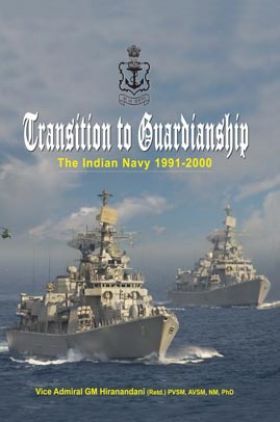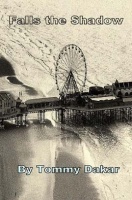The volume “Transition to Guardianship : The Indian Navy 1991-2000” is the last of the trilogy by the author, the first two being “Transition to Triumph” (1965-75) and “Transition to Eminence” (1975-1990) portraying the history of the Indian Navy on a wide canvas covering 35 years.
The period 1991-2000 was a challenging time due to the sweeping changes in the geopolitical and economic fronts. In the wake of Gulf War, the world witnessed the spectre of spiralling inflation due to a hike in oil prices. The unprecedented spike stunned the defence budgets which called for extraordinary abilities to cope with the grim circumstances in the face of limited funding for defence projects. It was a time of trail for the Navy as it was called upon to do ‘much more with much less’. The situation was aggravated with the disintegration of the USSR, India’s biggest defence supplier. It led to the discarding of the existing Rupee Rouble agreement and a demand for hard currency for defence procurement.
It is testimony to the Navy’s tenacity and resolve that it yet performed with aplomb. Using innovative means, the force level decline was effectively arrested by preserving equipment, innovating to produce in-house designs, encouraging indigenous production and by an improved Public–Private Industry partnership in defence production.
This book Useful for Leisure Read.
1. Sea Lines of Communication & Choke Points in the Indian Ocean
2. Major Navies in the Indian Ocean
3. The Development of the Navy, 1947–1990
4. Operation Muffet in Somalia 1992 to 1994
5. Operation Tasha
6. Operation Swan on the West Coast
7. Operation Leech, February 1998 : Anti Gun-running Operations in the Andaman Sea
8. Operation Rainbow — November 1999
9. Operation Talwar during the Kargil War in 1999
10. The Navy’s Participation in the Expeditions to Antarctica
11. Defence of Offshore Hydrocarbon Assets
12. The Marine Commandos
13. Goodwill Visits to Foreign Ports
14. Visits of Foreign Naval Ships 1991–2000
15. The Russian Acquisitions
16. Warship Production and Acquisition
17. Project 17 Stealth Frigates
18. The Submarine Arm
19. Commencement, Cessation & Resumption of Indigenous Submarine Construction
20. The Naval Air Arm
21. Indigenous Aircraft Carrier (IAC)
22. Maintenance, Repair and Refit Facilities
23. Third Naval Base at Karwar
24. Logistics
25. Integrated Logistics Management System [ILMS]
26. The Contribution of Research and Development to Self-Reliance
27. Underwater Ranges
28. Anti Missile Defence (AMD) Systems
29. Committees on Higher Defence Management — Excerpts on Aspects Affecting the Navy
30. Perspective Naval Planning
31. The New Management Strategy (NMS) — Budgetary Reforms in the Navy
32. Harnessing Information Technology
33. Changes in Command and Control Structure
34. Changes in Naval Headquarters Organisation
35. Personnel and Talent Management
36. Naval Training
37. The New Naval Academy at Ezhimala
38. Flag Officer Sea Training
39. Morale and Discipline
40. The Coast Guard
41. Naval Hydrography and Marine Cartography
42. Naval Oceanology and Meteorology
43. Naval Ceremonial
44. The National Cadet Corps and its Naval Wing
45. Sailing and Yachting
46. The Fifth Central Pay Commission
47. Gallantry Awards
48. Welfare


















